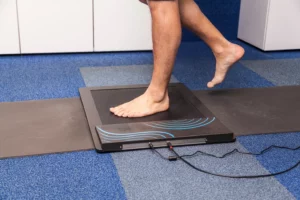Back Pain Recovery: Common Myths with low back pain
There is a huge evidence to suggest that people’s beliefs shape their perception of things, back pain included. It is important for health professionals like us here at the AllOutPhysiotherapy to educate the client in pain and their beliefs around this.
We said that our beliefs can change our outlook on certain things and such is true for lower back pain. There is evidence out there suggesting that some “old school” beliefs on back pain can actually inhibit recovery. In this blog post below I will be covering some common myths attached with back pain and explaining why these should be challenged.
Movement will make my back pain worse
It’s true that if you hurt yourself you will naturally want to protect the area which is sore but by not moving you are letting the muscles and the surrounding tissues become tighter. Although this feels good at the time because there is reduced pain when you move again the pain will come back. It is therefore easier to continue to move little and often to allow for rest and also some active recovery.
I should avoid training especially weight training when my back is sore
Again using the theory that movement is good for your back, provided that it is not too painful then weight training is a perfectly safe thing to do whilst your back is injured. Not only will it help keep you limber, exercise provides a hormonal release of serotonin and other feel good hormones which will make you feel happy that you exercised despite your pain and provide a feeling of accomplishment as a result. Other benefits of exercise include the muscles around the area of pain will be strengthened and maintained. Studies have shown that weight training especially have a good effect on back pain. Just remember to start small, build your confidence and it will get easier. This can all be done with the help of a qualified physiotherapist who can guide you with any training and movement issues you may have.
Scans will tell me the exact problem within my back
Although X-ray, MRI and other scans can be an essential aid in diagnosis, a detailed physiotherapy assessment can diagnose and solve the issue without the need of having to see a consultant and have long waiting times for scans. Scans can also be worrying because it may show things that you didn’t know about and were asymptomatic at the time, for example many people when they get older may show some age related changes (arthritis) this can happen in people as early as 40 and younger but they may not notice the symptoms (pain and stiffness) until they are much older.
Here are the most common issues we see here at AllOutPhysiotherapy with regards to lower back pain. Hopefully this helps with any fears and worries which can come when your back is sore. Remember that most people with lower back pain do not have serious issues but it is always beneficial to see a physiotherapist in order to fully assess and diagnose the issue, give you a management plan to help you fix the problem and then help to prevent the issue coming back afterwards.


